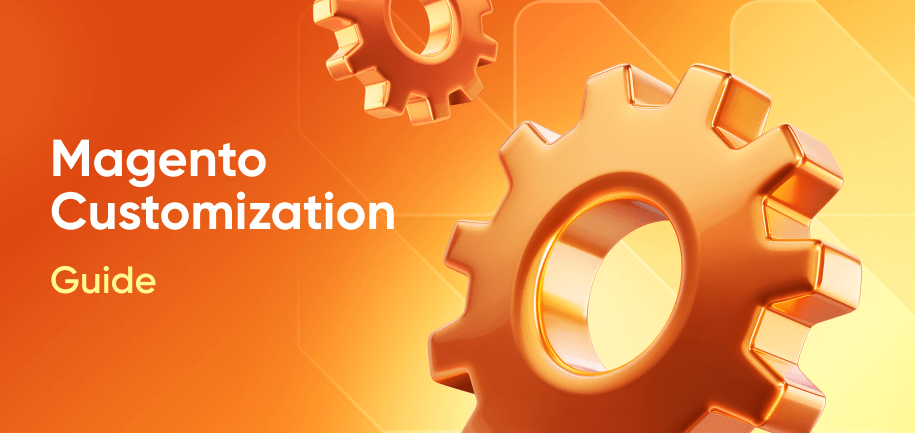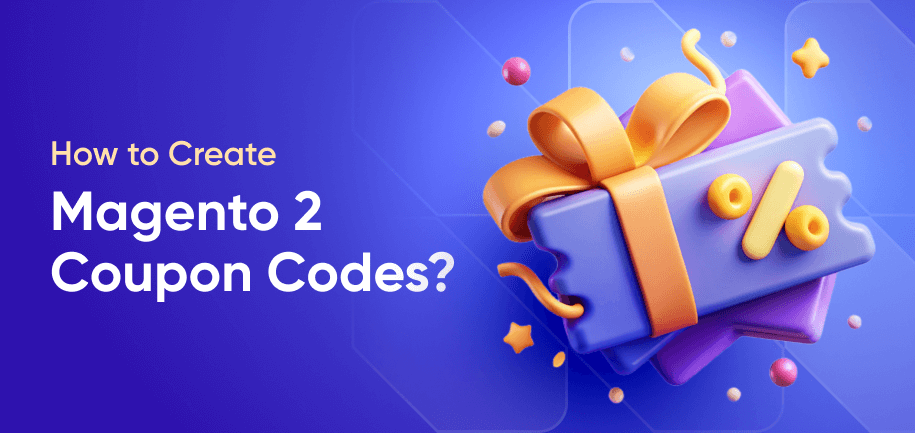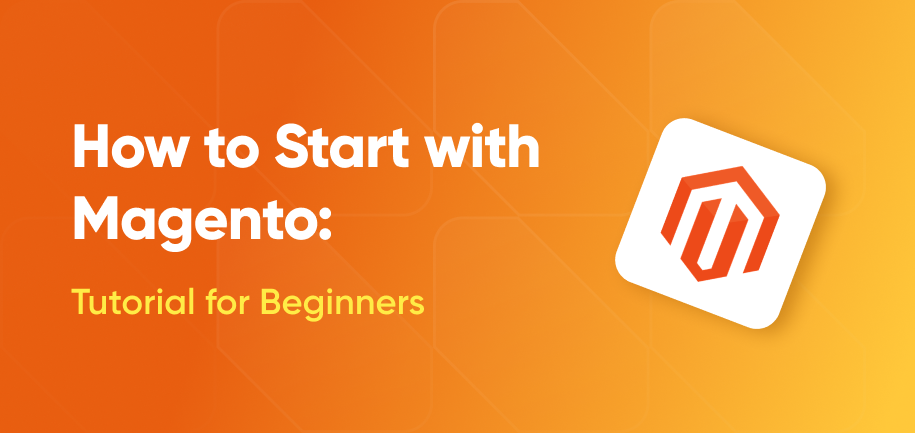Magento’s architecture supports catalogs of 100,000+ products and even scales to millions of SKUs, with some implementations handling over 1.5 million unique items through enterprise‑level hosting.
Yet, despite this raw capability, the default Magento setup may still struggle to deliver today's personalized, seamless shopper experiences, leaving many merchants challenged in differentiating and engaging customers.
The solution is strategic Magento customization – tailoring your site’s design, features, and user journey to fit your specific business and audience. In this guide, you’ll find practical techniques and best practices to help you effectively customize Magento, enhance user experience, and achieve standout results.
What Is Magento Customization & Personalization?
Customization and personalization are 2 important concepts in modern e-commerce. Let’s figure out how they differ and what role each of them plays in shaping your Magento store.
Magento Customization
Magento customization refers to adapting the platform’s design, structure, features, or workflows to fit your specific business requirements and strengthen your brand identity. This process can range from minor cosmetic changes to deep, functional transformations of your store.
Examples of Magento customization include:
Design Adjustments – Modifying storefront layout, updating colors and fonts, or adding interactive elements for a fresh, branded feel.
Theme Development – Creating custom or child themes to replace or override Magento’s default themes, ensuring a distinct appearance and functionality.
Feature Enhancements – Installing or building new modules to add features such as gift cards, loyalty programs, advanced search, or custom checkout steps.
Backend Workflows – Customizing admin processes, such as inventory management, reporting, or integrating with external systems (ERP, CRM, shipping).
Checkout Optimization – Streamlining checkout fields, offering guest checkout, or adding payment and shipping methods tailored to your audience.
Multi-store Support – Setting up multiple stores or languages within a single Magento instance for international or multi-brand businesses.
Magento Personalization
Personalization, on the other hand, focuses on leveraging customer data and behavior to create individualized shopping experiences. Magento personalization turns static pages into dynamic environments that adapt to each visitor in real time.
Examples of Magento personalization include:
Product Recommendations – Shown based on browsing history, purchase history, or items frequently bought together.
Dynamic Pricing – Offering special prices, discounts, or bundles targeted to specific customer segments or loyalty levels.
Personalized Content – Displaying banners, pop-ups, or featured products relevant to the visitor’s location, interests, or shopping patterns.
Custom Email Campaigns – Sending emails with tailored product suggestions, abandoned cart reminders, or exclusive offers.
Segmented Promotions – Targeting groups of customers (e.g., new vs. returning shoppers) with specific deals and shopping experiences.
The Benefits of Magento Customization & Personalization
Customization and personalization both transform generic storefronts into engaging, brand-rich experiences that convert and retain customers. Below are the key benefits of going beyond the default setup.
Tailored User Experience – Customized layouts, features, and workflows closely match customer preferences and shopping behaviors, making it easier and more enjoyable for users to navigate your site and complete purchases.
Stronger Brand Consistency – Unique themes, colors, messaging, and branded content keep your store visually and functionally aligned with your company’s identity, making your brand instantly recognizable.
Increased Conversion & Retention – Personalized product recommendations, targeted promotions, and frictionless shopping experiences reduce cart abandonment and boost conversion rates.
Scalability & Flexibility – With Magento customization, you can evolve your store as your business grows, adding new features, adapting to trends, and responding to customer feedback without platform limitations.
Magento Theme & Layout Customization Practices
One of Magento’s greatest strengths is its flexible approach to theming and layout, which lets merchants and developers control the visual identity and usability of any store. Let's take a look at common customization options:
Styling with the Admin Panel
For many basic but impactful changes, Magento’s Admin Panel provides straightforward options to update your site’s look and feel, without touching code. Here’s what you can do with built-in admin features:
Colors & Fonts: Easily upload your logo, set branding colors for buttons and backgrounds, and choose or upload custom fonts directly within Content > Design > Configuration.
CMS Blocks & Widgets: Use CMS blocks and widgets to place banners, promos, or custom HTML on different parts of your site. You can schedule content, manage static pages, and create dynamic visual layouts with drag-and-drop simplicity.
Layout Updates: Make minor adjustments to your homepage or landing pages using the Page Builder (in Commerce/Cloud editions) or layout update XML from the admin.
Creating Child Themes vs. Modifying Base Themes
When you want a unique look or custom functionality beyond the admin tools, Magento’s theme system lets you build on top of the platform’s default themes.
The recommended approach is to create a child theme (sometimes called a descendant theme). This method means your new theme inherits all structural and stylistic elements from a parent theme (such as Luma or Blank) and only overrides the files and settings you wish to change. By working this way, you keep upgrades safe and your customizations organized.
In contrast, editing Magento’s built-in theme files directly is risky – future updates can overwrite your changes and cause site issues. For maintainability and security, always extend the parent theme.
Working with Layout XML, Blocks, and Templates
Advanced customizations rely on Magento’s structured approach to layouts and templates. Layout XML files define which blocks appear on a page, control the structure of content areas, and adjust components (headers, product views, footers, etc.). These XML files act as blueprints, giving granular control over what users see and how the site is structured.
PHP blocks serve as the link between backend logic and frontend templates. They fetch and prepare data, then pass it to PHTML template files, where HTML and embedded PHP together output what the customer views in the browser.
For deeper customization, you might create new controllers for special page requests or custom blocks to display dynamic data. When you need to change how something looks or is presented, you override or create new PHTML templates within your child theme.
Frontend Optimization & Performance Considerations
To deliver a fast, responsive storefront and boost SEO, you need to follow best practices when customizing Magento’s flexible frontend. This helps you avoid performance bottlenecks and create a better user experience.
LESS Modular Structure and File Placement – Structure your CSS using Magento’s built-in LESS modular system. Keep your styles organized by modules or themes, and avoid redundant or conflicting rules. Place all CSS, JavaScript, and media files in their proper directories to maintain clarity and ease of upgrades.
JS/CSS Bundling, Image Optimization, and CDN – Magento lets you bundle and minify JavaScript and CSS files to reduce load times – always enable these in production. Compress images to avoid slowdowns, and use a CDN to deliver static files faster worldwide.
Modern Frontend Frameworks – Switch to a faster solution like Hyvä Theme for dramatically quicker page loads and higher performance scores. For maximum speed and flexibility, use headless setups with Magento’s GraphQL APIs to create custom frontends, fully decoupling your storefront and backend.
Magento Personalization Strategies Using Product & Customer Data
To boost loyalty and conversions, you need personalized shopping experiences. Magento provides the tools and integrations to help you tailor your catalog and user experience for different customer needs.
Configurable and Custom Product Options
Magento enables you to offer shoppers a wide variety of product choices right out of the box. With configurable products, you can let customers select from variants such as color, size, material, or other attributes, all managed under a single product page. This makes inventory smoother and delivers a seamless buying journey.
Beyond these, custom product options allow you to add fields for text, dates, dropdowns, file uploads, or checkboxes, perfect for features like engraving, gift wrap, monogramming, or other personalized touches that resonate with buyers.
Customer Behavior, Segments, and Dynamic Offers
Magento allows you to deliver personalized shopping experiences by using customer behavior and segmentation data to serve targeted content and promotions. Here’s how to make the most of it:
Behavior-Based Personalization. Leverage browsing history, purchase records, wishlists, and on-site searches to dynamically tailor what customers see, such as product recommendations, banners, or content blocks.
Customer Segmentation. Group users by demographics, order frequency, or cart behavior. Then customize emails, homepage blocks, or pop-up offers for each segment to increase engagement.
Dynamic Pricing & Promotions. Offer tiered pricing for wholesale buyers, cart abandonment discounts, loyalty perks for returning shoppers, or exclusive flash sales. Ensure consistent pricing across your website, mobile app, and in-store system for seamless omnichannel experiences.
Extensions for Product Recommendations
To boost personalization, use Magento Marketplace extensions or trusted partners. Automatic related products enable AI-driven recommendations, upsells, and custom bundles tailored to customer interests. As a result, shoppers discover more relevant products, and your average order value and loyalty increase.
A/B Testing for Personalization Success
To maximize results, run regular A/B tests on personalized elements, such as banners, product recommendations, or dynamic pricing offers. Track customer interaction, conversion rates, and sales metrics to identify which strategies are most effective. Use these insights to iteratively refine your personalization tactics.
5 Best Practices for Customizing Magento
A successful, maintainable, and high-performing Magento store requires more than simply adding new features or making design changes. Following best practices during Magento customization saves time, reduces costs, and prevents issues as your store evolves.
1. Align Customization with Business Goals
Start every customization project with a clear understanding of your business needs and customer expectations. Prioritize features that improve user experience, support your marketing strategy, or streamline operations. Resist the urge to introduce unnecessary complexity, complex code, and excessive custom modules can make maintenance harder and upgrades more stressful.
Example: If your goal is to improve mobile conversion rates, focus your efforts on responsive design updates and mobile checkout flow rather than adding features that aren’t essential for your audience.
2. Follow Magento Standards and Write Quality Code
Magento provides detailed developer guidelines and an established coding structure. Always:
Extend core functionality, using plugins, observers, and dependency injection instead of rewiring Magento’s core files.
Use Magento’s built-in APIs for data operations to keep your customizations compatible with future updates.
Write modular, reusable code and separate logic into appropriate models, helpers, or service classes.
Document your code thoroughly so future developers can easily understand and maintain it.
These standards ensure your store stays secure, stable, and upgrade-safe, which allows you to confidently introduce new features and improvements while minimizing risks and disruptions.
3. Prioritize Performance at Every Step
Performance should be a core focus during Magento customization. Poorly optimized custom code can slow down your storefront and hurt conversion rates. To avoid this:
Use batch loading for large data operations instead of loading items one at a time.
Leverage cacheable blocks (including full page caching) to reduce server load and increase page speed.
Optimize all data processing loops and queries, avoiding redundant database calls – use getList() repository methods where possible.
Regularly profile custom modules or new integrations to identify performance bottlenecks before deployment.
Example: When building a custom product filter or search feature, use AJAX loading and efficient queries to provide instant results without reloading the entire page.
4. Ensure Scalability and Easy Maintenance
Design your customizations to be scalable and easy to maintain. Structure theme and module files consistently, follow naming conventions, and group related assets for clarity. Set up version control (such as Git) and use development, staging, and production environments to test changes safely before deployment.
5. Test Thoroughly and Monitor Results
Before launching any customization, thoroughly test functionality, including edge cases, mobile devices, and different user roles. After deployment, use analytics and monitoring tools to track site performance, error logs, and user interactions. This allows for quick identification and resolution of any issues stemming from customization.
Post-Customization Magento Maintenance & Upgrades
Regular maintenance ensures your Magento store remains secure, fast, and reliable as your business grows. Prioritize these best practices for smooth operation:
Regular Updates – Keep your Magento core, themes, and extensions up to date to benefit from the latest security patches and features, and to avoid compatibility issues.
Backups and Testing Environments – Always create regular backups of your store’s files and database. Use a staging environment to safely test updates and customizations before rolling them out to your live site.
Performance Monitoring – Actively monitor your store’s performance using tools like full-page caching, Varnish or Redis, and application monitoring platforms such as New Relic. This helps you catch issues early and optimize speed for a better user experience.
Security Practices – Harden your Magento installation by using strong, unique passwords, enabling two-factor authentication (2FA) for admin accounts, and limiting admin panel access by IP address. Regularly audit your user accounts, permissions, and file system for suspicious activity.
Database Optimization – Routinely clean and optimize your database by removing unused data (such as logs, old orders, and temporary files) to maintain performance and reduce storage costs.
Final Thoughts on Customizing Your Magento Store
Effective Magento customization lets you create a unique, memorable shopping experience that enhances both your brand and your store’s functionality. For advanced features or technical challenges, working with professional Magento developers ensures your site is optimized for performance and perfectly aligned with your business goals. With expert support, your Magento store can truly stand out in today’s e-commerce market.
















